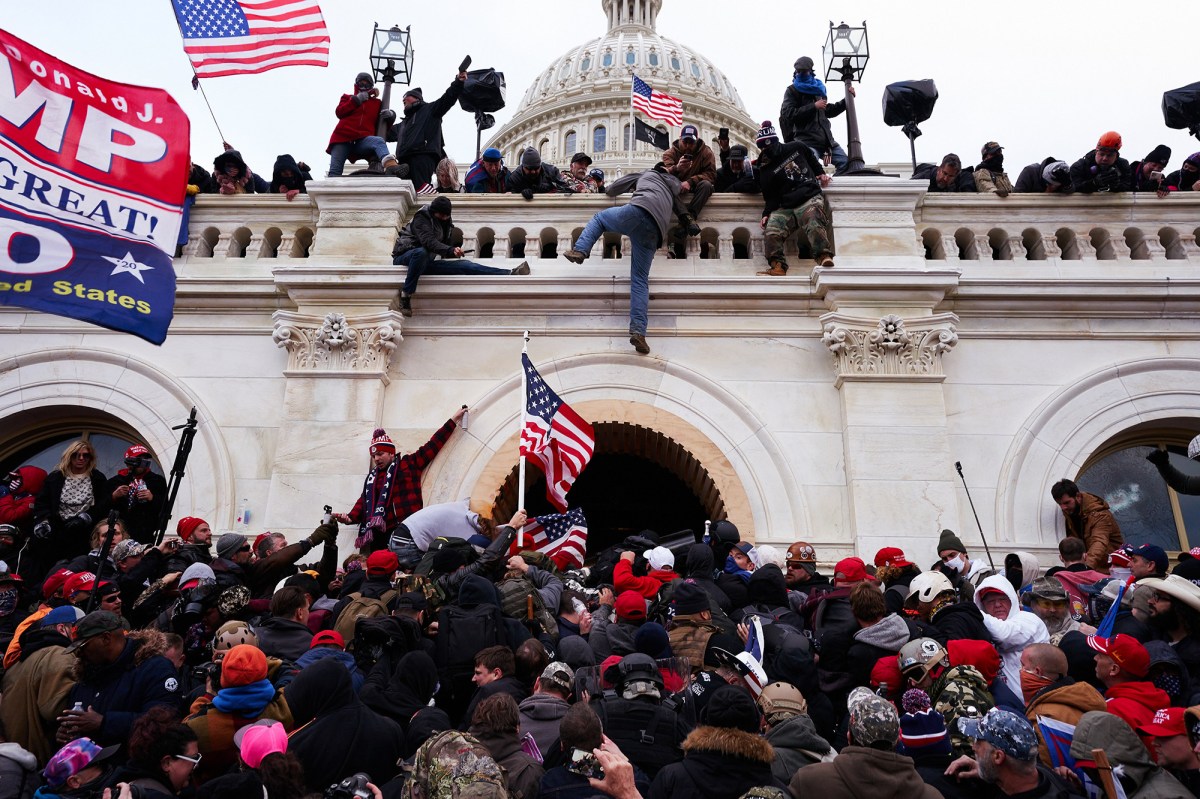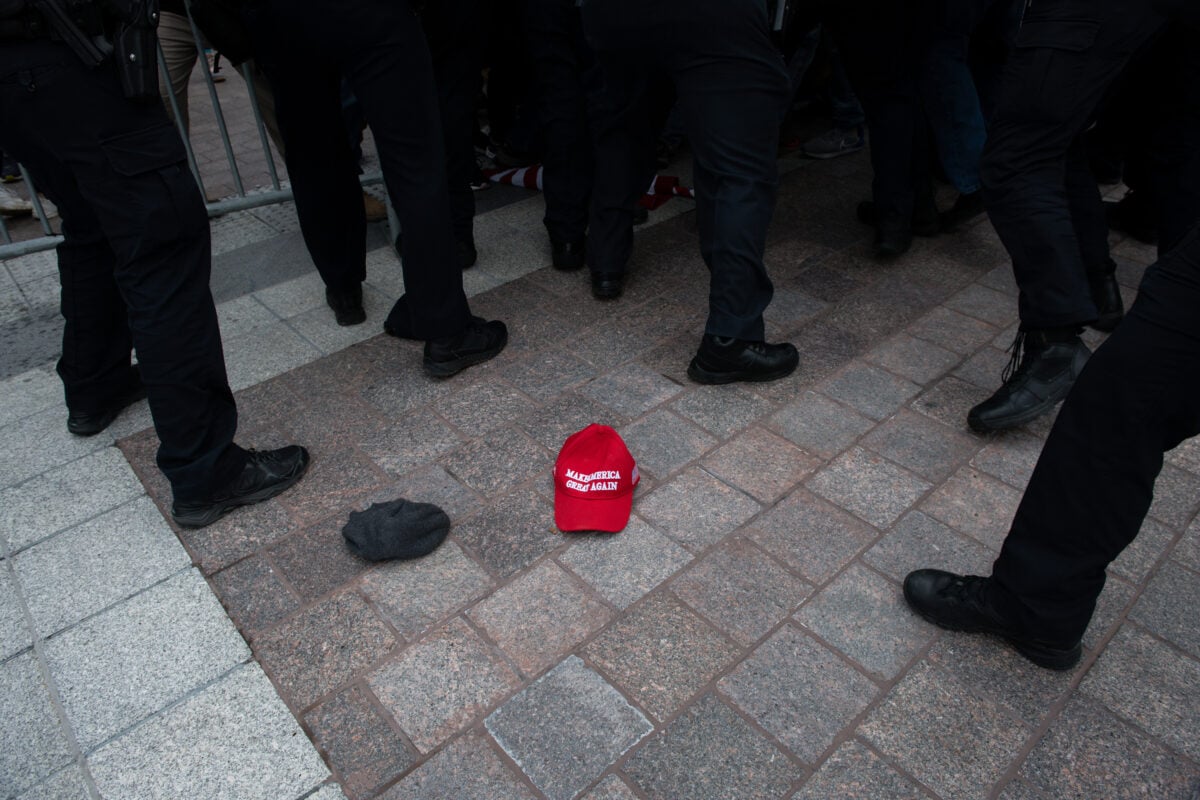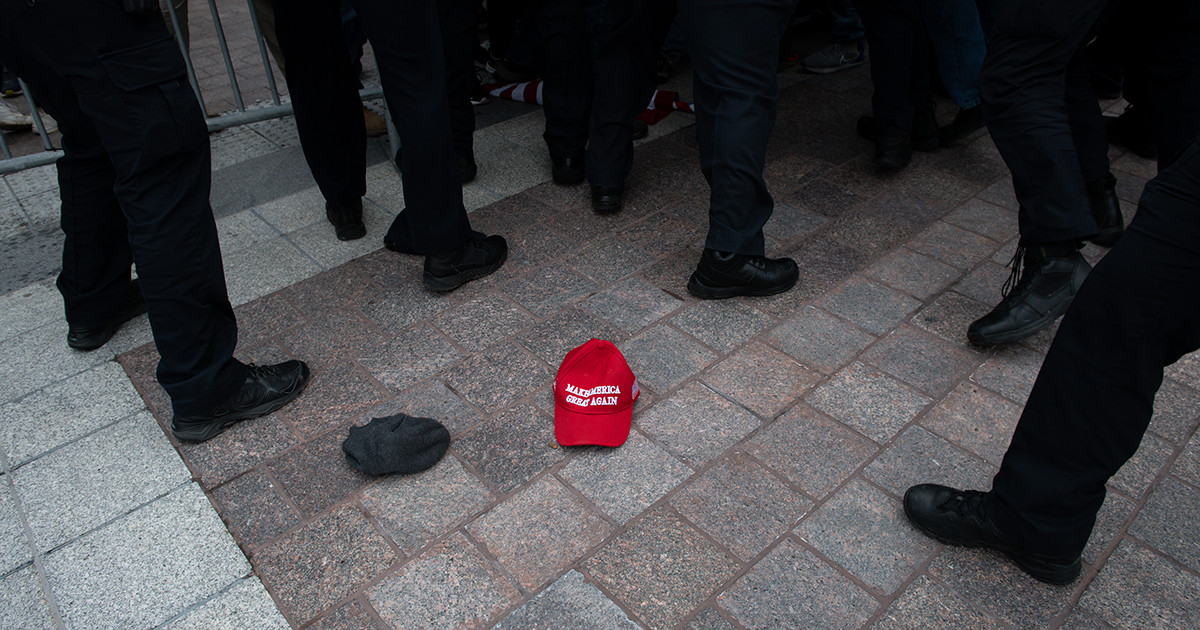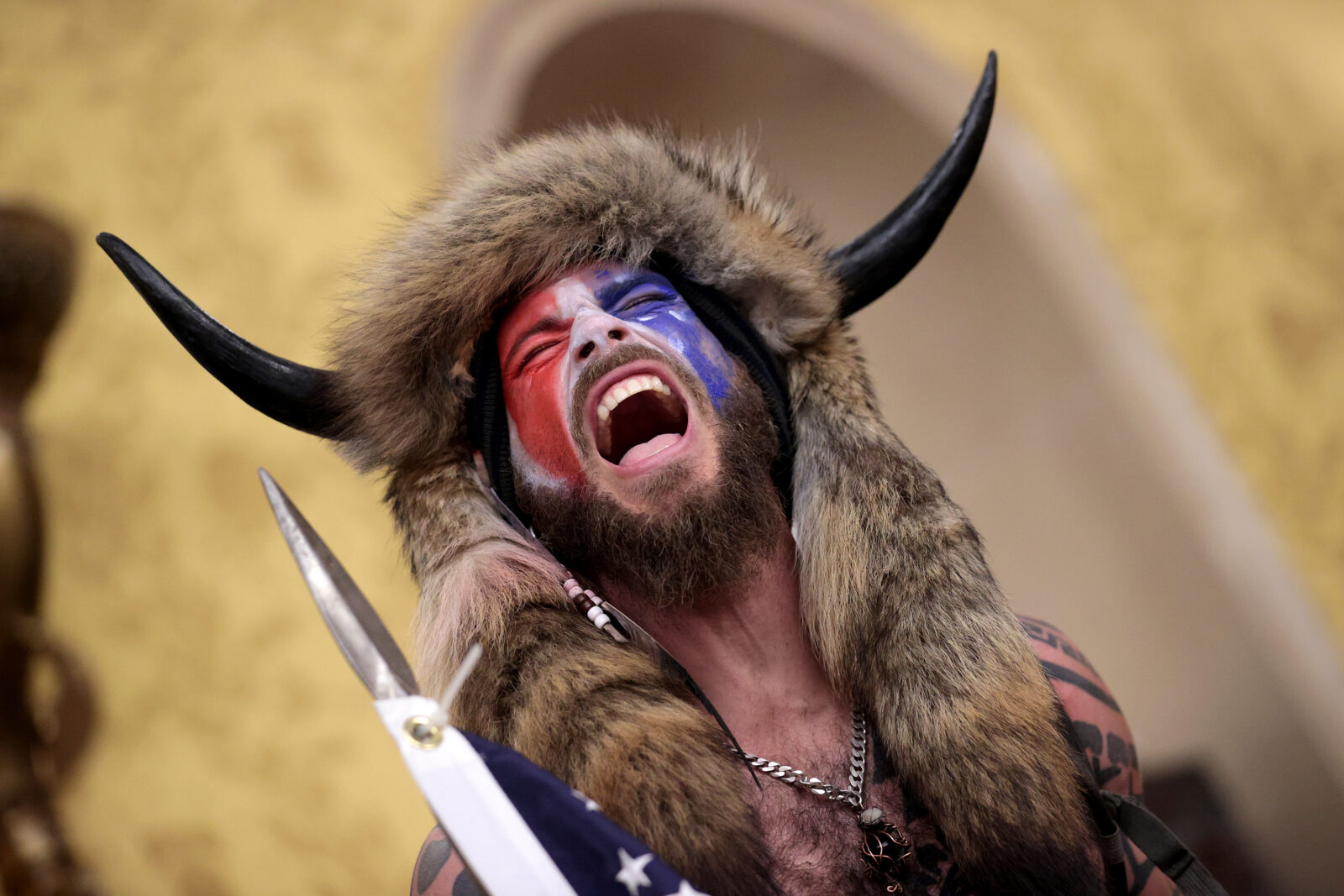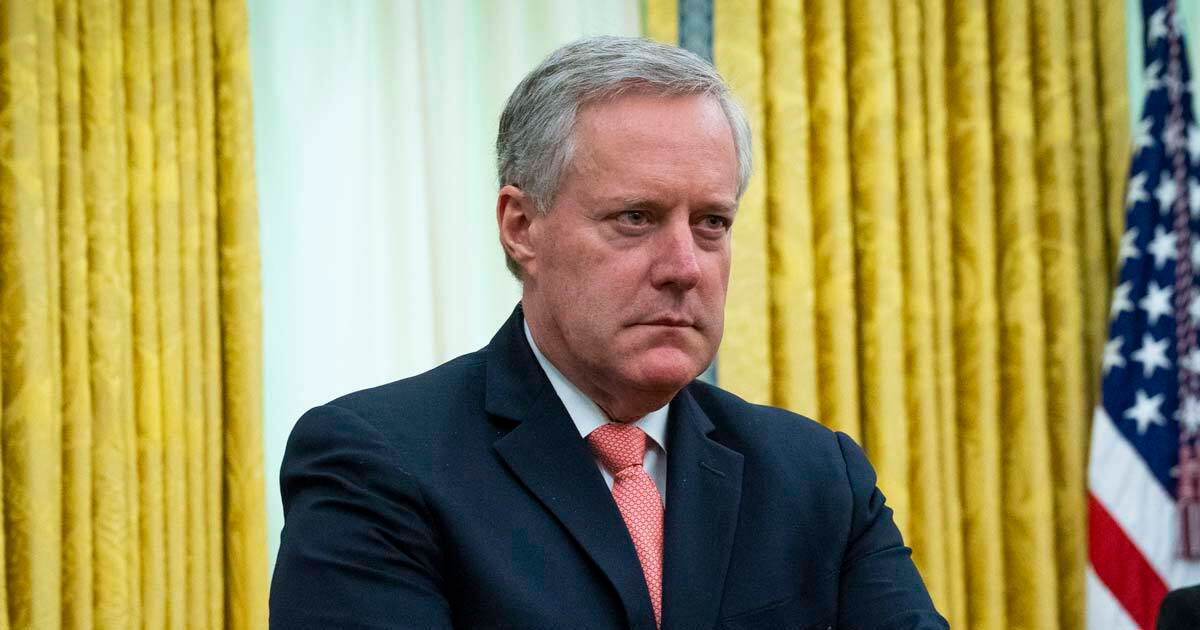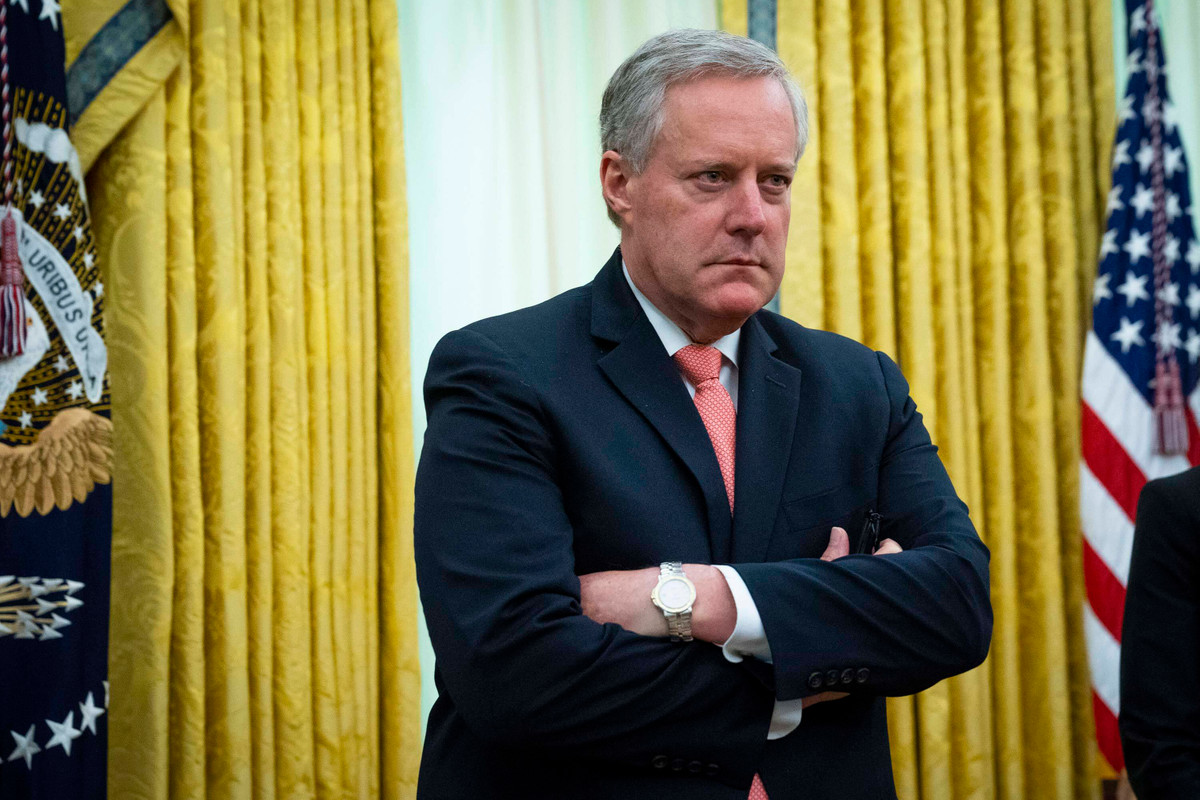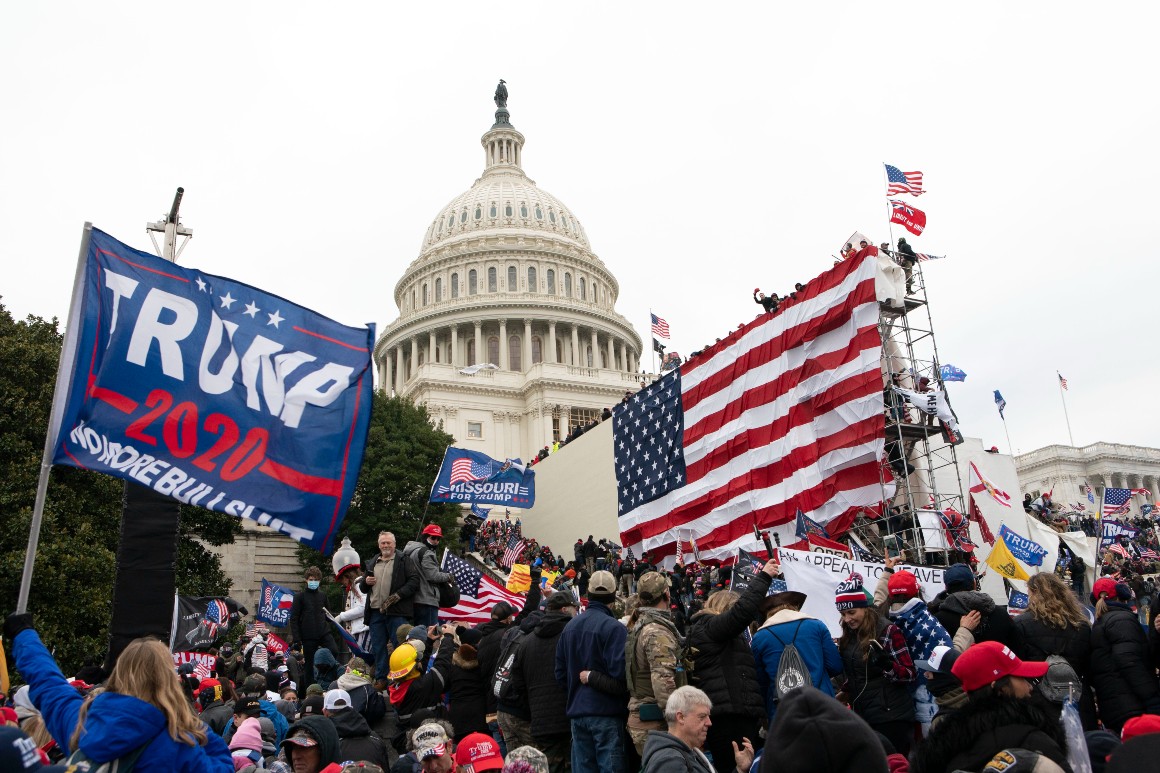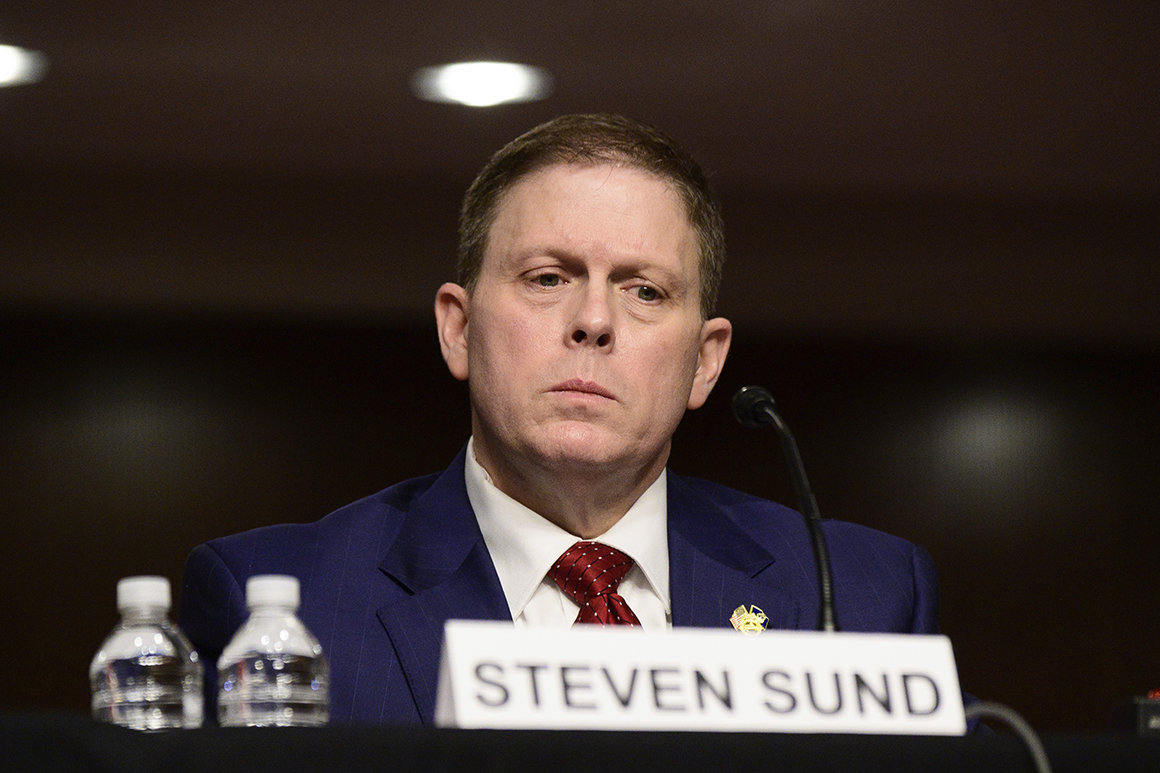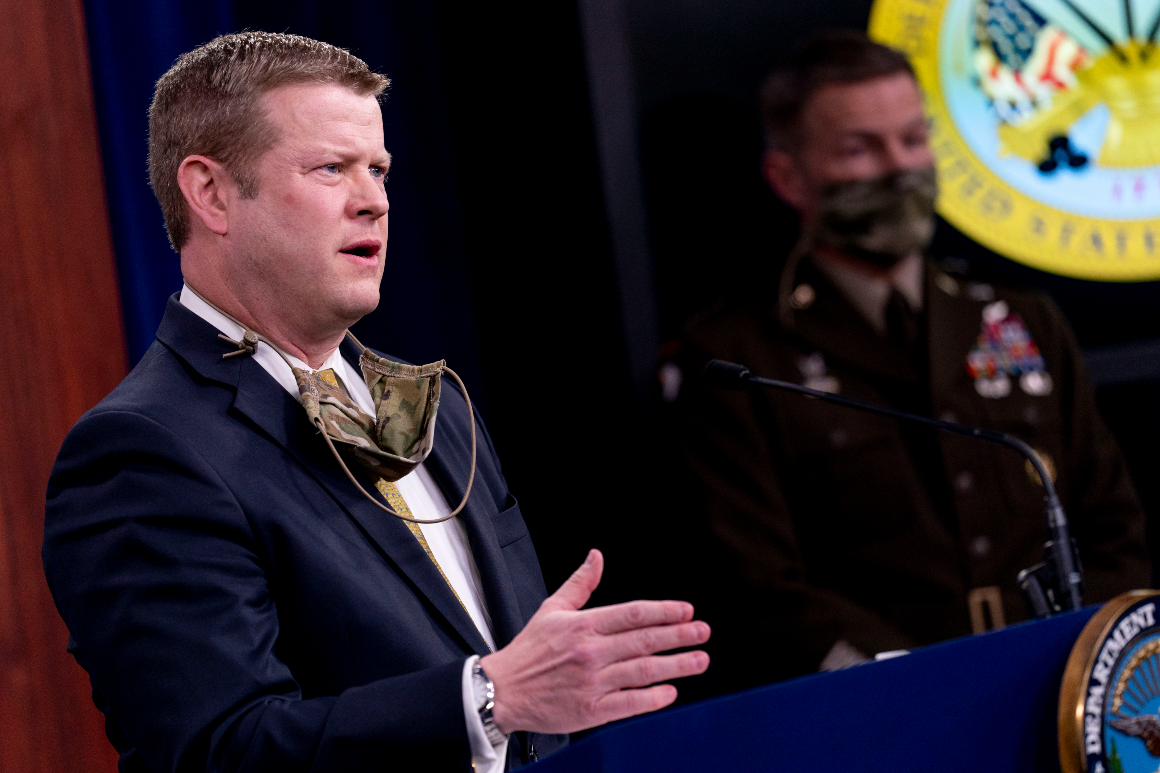'Absolute liars':
Ex-D.C. Guard official says generals lied to Congress about Jan. 6
In a 36-page memo to the Capitol riot committee, Col. Earl Matthews also slams the Pentagon's inspector general for what he calls an error-ridden report.
The U.S. Capitol is seen as National Guard secure the the grounds on February 08, 2021. | Tasos Katopodis/Getty Images
Politico
By
BETSY WOODRUFF
SWAN and
MERIDITH
MCGRAW
12/06/2021 04:30
A former D.C. National Guard official is accusing two senior Army leaders of lying to Congress and participating in a secret attempt to rewrite the history of the military's response to the Capitol riot.
In a 36-page memo, Col. Earl Matthews, who held high-level National Security Council and Pentagon roles during the Trump administration, slams the Pentagon's inspector general for what he calls an error-riddled report that protects a top Army official who argued against sending the National Guard to the Capitol on Jan. 6, delaying the insurrection response for hours.
Matthews' memo, sent to the Jan. 6 select committee this month
and obtained by POLITICO, includes detailed recollections of the insurrection response as it calls two Army generals — Gen. Charles Flynn, who served as deputy chief of staff for operations on Jan. 6, and Lt. Gen. Walter Piatt, the director of Army staff — “absolute and unmitigated liars” for their characterization of the events of that day. Matthews has never publicly discussed the chaos of the Capitol siege.
On Jan. 6, Matthews was serving as the top attorney to Maj. Gen. William Walker, then commanding general of the D.C. National Guard. Matthews’ memo defends the Capitol attack response by Walker, who now serves as the House sergeant at arms, amplifying Walker's previous congressional testimony about the hourslong delay in the military’s order for the D.C. National Guard to deploy to the riot scene.
“Every leader in the D.C. Guard wanted to respond and knew they could respond to the riot at the seat of government” before they were given clearance to do so on Jan. 6, Matthews’ memo reads. Instead, he said, D.C. guard officials “set [sic] stunned watching in the Armory” during the first hours of the attack on Congress during its certification of the 2020 election results.
Rioters stand outside the U.S. Capitol in Washington on Jan. 6, 2021. | Jose Luis Magana/AP Photo
Matthews' memo levels major accusations: that Flynn and Piatt lied to Congress about their response to pleas for the D.C. Guard to quickly be deployed on Jan. 6; that the Pentagon inspector general’s November report on Army leadership’s response to the attack was “replete with factual inaccuracies”; and that the Army has created its own closely held revisionist document about the Capitol riot that’s “worthy of the best Stalinist or North Korea propagandist.”
The memo follows Walker’s own public call for the inspector general to retract its detailed report on the events of Jan. 6, as first reported by The
Washington Post. Walker told the Post he objected to specific allegations by the Pentagon watchdog that Matthews’ memo also criticizes, calling the inspector general’s report “inaccurate” and “sloppy work.”
Reached for comment on Matthews’ memo, Walker, the former head of the D.C. Guard, said the report speaks for itself and that he had nothing further to add. A Jan. 6 committee spokesperson declined to comment.
The new memo from Matthews, who now serves in the Army reserves, emerges as officials involved in the response that day try to explain their decision-making to investigators. The House select committee has probed the attack for months, and earlier this year top officials testified before the House oversight panel.
Reached for comment, Matthews said the memo he wrote is entirely accurate. “Our Army has never failed us and did not do so on January 6, 2021,” he said. “However, occasionally some of our Army leaders have failed us and they did so on January 6th. Then they lied about it and tried to cover it up. They tried to smear a good man and to erase history.”
Flynn, now the commanding general of the U.S. Army Pacific, and Piatt didn't respond to messages. Army spokesperson Mike Brady said in a statement that the service's "actions on January 6th have been well-documented and reported on, and Gen. Flynn and Lt. Gen. Piatt have been open, honest and thorough in their sworn testimony with Congress and DOD investigators."
“As the Inspector General concluded, actions taken ‘were appropriate, supported by requirements, consistent with the DOD’s roles and responsibilities for DSCA, and compliant with laws, regulations, and other applicable guidance," Brady added. “We stand by all testimony and facts provided to date, and vigorously reject any allegations to the contrary. However, with the January 6th Commission’s investigation still ongoing, it would be inappropriate to comment further.”
Former U.S. Capitol Police Chief Steven Sund testifies before a Senate Homeland Security and Governmental Affairs & Senate Rules and Administration joint hearing on Capitol Hill, Washington, Tuesday, Feb. 23, 2021, to examine the January 6th attack on the Capitol. (Erin Scott/The New York Times via AP, Pool) | Erin Scott/The New York Times via AP
A 2:30 phone call
Matthews’ memo begins by focusing on a 2:30 p.m. conference call on Jan. 6 that included senior military and law enforcement officials, himself and Walker among them. Then-Capitol Police Chief Steven Sund “pleaded” on the call for the immediate deployment of the National Guard to the Capitol, Matthews recalled, saying that rioters had breached the building’s perimeter. Walker has also told Congress that Sund made that plea then. According to Matthews, Flynn and Piatt both opposed the move.
At the time, Piatt was the director of Army staff, one of the top generals in the Pentagon, and Flynn was the Army’s director of operations. The two men were the highest-ranking Army officials who spoke on the 2:30 call, according to Matthews.
“LTG Piatt stated that it would not be his best military advice to recommend to the Secretary of the Army that the D.C. National Guard be allowed to deploy to the Capitol at that time,” Matthews wrote, adding: “LTGs Piatt and Flynn stated that the optics of having uniformed military personnel deployed to the U.S. Capitol would not be good."
Piatt and Flynn suggested instead that Guardsmen take over D.C. police officers’ traffic duties so those officers could head to the Capitol, Matthews continues.
In addition to Matthews’ memo,
POLITICO also obtained a document produced by a D.C. Guard official and dated Jan. 7 that lays out a timeline of Jan. 6. The D.C. Guard timeline, a separate document whose author took notes during the call, also said that Piatt and Flynn at 2:37 p.m. “recommended for DC Guard to standby,” rather than immediately deploying to the Capitol during the riot.
Four minutes later, according to that Guard timeline, Flynn again “advised D.C. National Guard to standby until the request has been routed” to then-Army Secretary Ryan McCarthy and then-acting Defense Secretary Chris Miller.
Everyone on the call was “astounded” except Piatt and Flynn, Matthews wrote.
Both men, however, later denied to Congress that they had said the Guard shouldn’t deploy to the Capitol.
In response to a written question from House Oversight Committee Chair Carolyn Maloney (D-N.Y.) in June about whether Piatt advised anyone in the Guard’s chain of command not to deploy directly to the Capitol,
Piatt wrote, “At no point on January 6 did I tell anyone that the D.C. National Guard should not deploy directly to the Capitol.”
That statement, Matthews says in his memo, is “false and misleading.”
Walker also testified to Congress in March that Piatt and Flynn expressed concerns about “optics.”
Further, Flynn
told Maloney that he “never expressed a concern about the visuals, image, or public perception of" sending Guardsmen to the Capitol.
That answer, Matthews says in his memo, is “outright perjury.”
Matthews wrote that he and Walker “heard Flynn identify himself and unmistakably heard him say that optics of a National Guard presence on Capitol Hill was an issue for him. That it would not look good. Either Piatt or Flynn mentioned ‘peaceful protestors.’”
Flynn’s brother, retired Lt. Gen. Michael Flynn, promulgated a host of conspiracy theories in the lead-up to Jan. 6 and called for former President Donald Trump to impose martial law. Matthews’ memo does not insinuate that Gen. Charles Flynn’s actions on Jan. 6 were shaped by his brother, who has been subpoenaed by the select committee, and does not mention Michael Flynn.
The two generals told the House oversight committee that the Guard
wasn’t ready to respond to the chaos that day, and Flynn
testified to the House Oversight Committee in June that a “team of over 40 officers and non-commissioned officers immediately worked to recall the 154 D.C. National Guard personnel from their current missions, reorganize them, re-equip them, and begin to redeploy them to the Capitol.”
Matthews says that assertion “constituted the willful deception of Congress.”
“If it does not constitute the willful and deliberate misleading of Congress, then nothing does,” Matthews wrote of Flynn’s statement. “Flynn was referring to 154 D.C. Guardsmen who were already on duty, were trained in civil disturbance response, already had area familiarization with Washington, DC, were properly kitted and were delayed only because of inaction and inertia at the Pentagon.”
In other words, Matthews indicates, the idea that it took 40 officers to get 154 National Guard personnel ready to go to the Capitol beggars belief.
Every D.C. Guard leader was desperate to get to the Capitol to help, Matthews writes — then stunned by the delay in deployment. Responding to civil unrest in Washington is “a foundational mission, a statutory mission of the D.C. National Guard,” his memo notes.
“Their attitude was ‘This is What We Do.’ ‘Send Me,’” the memo continues.
It adds that the previous summer, when civil unrest unfolded in the wake of the police murder of George Floyd, the D.C. Guard was deployed numerous times to protect federal buildings. Its belated mobilization on Jan. 6, Matthews continues, was a jarring break from the norm.
Importantly, Matthews’ memo alone paints an incomplete picture of how the Army’s top leadership responded to Jan. 6. Matthews indicates he did not have firsthand knowledge of what the Army Secretary was doing for much of the afternoon — and, in fact, says D.C. National Guard leaders at times had trouble finding him.
Secretary of the Army Ryan McCarthy, left, speaks during a briefing at the Pentagon on Tuesday, Dec. 8, 2020. | Andrew Harnik/AP Photo
Where was Ryan McCarthy?
While taking issue with the Pentagon watchdog’s timeline regarding the actions and involvement of key figures in the response, Matthews' memo seeks to illustrate errors in the Pentagon inspector general report released last month.
That report states that McCarthy had to call Walker twice on Jan. 6 to order him to deploy the D.C. Guard. Matthews’ memo calls this “an outrageous assertion … as insulting as it is false,” and says McCarthy himself was “incommunicado or unreachable for most of the afternoon.”
The inspector general’s report says McCarthy arrived at the D.C. Metropolitan Police Department at 4:05 p.m., and that “witnesses told us that not having heard from MG Walker regarding any specific plan." McCarthy and others present, including D.C. Mayor Muriel Bowser and D.C. Police Chief Robert Contee, themselves drafted a comprehensive plan for the Guard's deployment, according to the Pentagon watchdog.
The report further says that soon afterward, Miller and Gen. Mark Milley, chairman of the Joint Chiefs of Staff, reviewed that plan over the phone. Miller authorized the deployment of the D.C. Guard and McCarthy informed Walker of it during a call at 4:35 p.m; McCarthy then held
a press conference with the D.C. mayor and called Walker again to reissue the order that he deploy the Guard, according to the Pentagon inspector general.
Matthews challenges that Jan. 6 timetable in his memo. He writes that D.C. Guard leaders “still have not seen this so-called plan developed by McCarthy and allegedly approved by Acting Secretary Miller at 4:32PM.” He adds that the idea that the Army secretary would give Guard personnel support for tactical planning and coordination is “patently absurd.”
Walker, meanwhile, has said no call happened between him and McCarthy at 4:35 p.m. The D.C. Guard’s Jan. 6 timeline — produced while Walker helmed the D.C. National Guard — does not document any phone call between McCarthy and Walker at 4:35.
Both McCarthy and Miller declined to comment.
Megan Reed, a spokesperson for the Pentagon inspector general, said their office stands by its report.
Both McCarthy and Miller declined to comment.
Megan Reed, a spokesperson for the Pentagon inspector general, said their office stands by its report.
Jan. 6 in 180 seconds
Share
Play Video
'Stalinist Propaganda'
Matthews' memo also homes in on a document that Army officials have referenced but never fully revealed, titled “Report of the Army’s Operations on January 6 2021." In Matthews' view, it lays out a fabricated timeline in a bid to burnish the Army's reputation.
In a 36-page memo to the Capitol riot committee, Col. Earl Matthews also slams the Pentagon's inspector general for what he calls an error-ridden report.

www.politico.com
.






